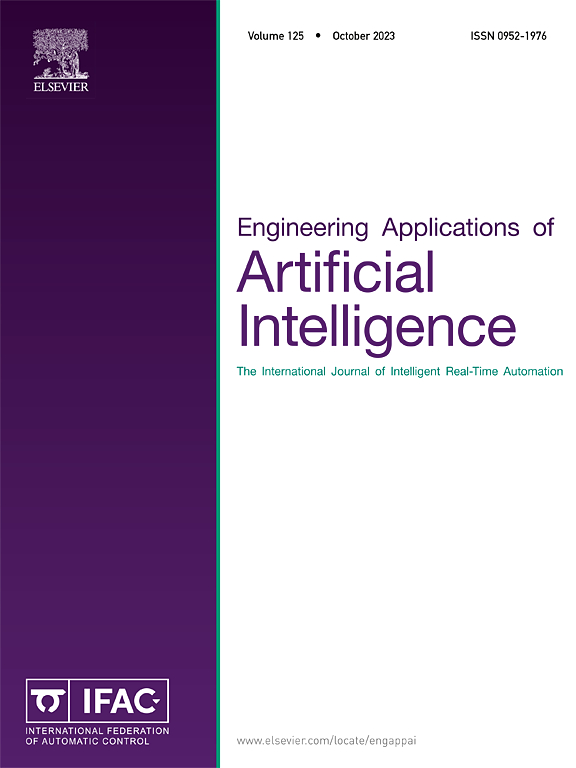解决智能电网中的异常:检测和定位大电流负载的方法
IF 8
2区 计算机科学
Q1 AUTOMATION & CONTROL SYSTEMS
Engineering Applications of Artificial Intelligence
Pub Date : 2025-07-02
DOI:10.1016/j.engappai.2025.111223
引用次数: 0
摘要
智能电网的概念包含了广泛的先进技术,超越了传统电网的能力,增强了监测、控制和效率。在此上下文中,术语“异常”表示不寻常或意外的事件,例如异常的消费模式、基础设施故障、停电、网络攻击或能源盗窃。异常检测是提高智能电网系统可靠性和运行效率的一个重要方面。在这项研究中,我们专注于检测低压网络中的异常大电流负载,并提出了一个为此目的设计的系统。系统架构包括配备电流传感器的配电变压器和客户仪表,用于无线数据传输的射频(RF)调制解调器,以及用于数据分析和存储的中央管理服务器。该系统采用机器学习(ML)算法进行实时异常检测和定位。因此,在特征提取阶段,使用了三种不同的方法:模式分析,离散小波变换(DWT)和快速沃尔什-阿达玛变换(FHWT)。模式分析方法使用母高斯过程回归(MGPR)方法获得了最好的性能,而DWT和FHWT方法使用可优化的Boosting方法获得了最准确的结果。模式分析法的检验均方根误差(RMSE)为69.36,决定系数(R2)为0.97,平均绝对误差(MAE)为45.40。DWT方法采用以Daubechies 18为主小波的五能级小波变换,检验RMSE为53.44,R2为0.98,MAE为37.25。FHWT方法的检验RMSE为83.99,R2为0.95,MAE为53.71。其中,DWT方法准确率最高,平均错误率为3.02%,Pattern Analysis方法和FHWT方法的错误率分别为4.09%和4.86%。这种创新的异常检测和定位方法为未来配电网络的研究和开发提供了坚实的基础,具有减少能量损失和提高电网稳定性的潜力。该系统通过快速识别未经授权的消耗和故障情况,在减少能量损失、防止设备损坏和增强电网稳定性方面具有重要前景。其实时监控功能使公用事业公司能够降低与能源盗窃和瞬态过载相关的风险,直接有助于节省运营成本并提高服务可靠性。本文章由计算机程序翻译,如有差异,请以英文原文为准。
Addressing anomalies in smart grids: Methods for detecting and localizing high-current loads
The concept of a smart grid encompasses a wide range of advanced technologies that surpass the capabilities of traditional power grids, enabling enhanced monitoring, control and efficiency. In this context, the term “anomaly” denotes unusual or unexpected occurrences, such as abnormal consumption patterns, infrastructure failures, power outages, cyber attacks, or energy theft. Anomaly detection is a critical aspect of improving the reliability and operational efficiency of Smart grid systems. In this study, we focus on detecting high current loads as anomalies in low voltage networks and present a system designed for this purpose. The system architecture includes distribution transformers and customer meters equipped with current sensors, radio frequency (RF) modems for wireless data transmission, and a central management server for data analysis and storage. The system employs machine learning (ML) algorithms for real-time anomaly detection and localization. Therefore, in the feature extraction phase, three distinct methods are utilized: Pattern Analysis, Discrete Wavelet Transform (DWT), and Fast Walsh–Hadamard Transform (FHWT). The Pattern Analysis method achieved the best performance using the Matern Gaussian Process Regression (MGPR) approach, whereas the DWT and FHWT methods yielded the most accurate results with the Optimizable Boosting Method. The results of the Pattern Analysis method indicate a test root mean square error (RMSE) of 69.36, a coefficient of determination (R2) of 0.97, and a mean absolute error (MAE) of 45.40. The DWT method, employing a five-level wavelet transform with Daubechies 18 as the main wavelet, achieved a test RMSE of 53.44, an R2 of 0.98, and an MAE of 37.25. The FHWT method resulted in a test RMSE of 83.99, an R2 of 0.95, and an MAE of 53.71. Among these methods, the DWT method demonstrated the highest accuracy, with an average error rate of 3.02%, while the Pattern Analysis method and the FHWT method exhibited error rates of 4.09% and 4.86%, respectively. This innovative anomaly detection and localization approach provides a robust foundation for future research and development in power distribution networks, with the potential to reduce energy losses and improve grid stability. This system holds significant promise for reducing energy losses, preventing equipment damage, and enhancing grid stability by enabling rapid identification of unauthorized consumption and fault conditions. Its real-time monitoring capability empowers utilities to mitigate risks associated with energy theft and transient overloads, directly contributing to operational cost savings and improved service reliability.
求助全文
通过发布文献求助,成功后即可免费获取论文全文。
去求助
来源期刊

Engineering Applications of Artificial Intelligence
工程技术-工程:电子与电气
CiteScore
9.60
自引率
10.00%
发文量
505
审稿时长
68 days
期刊介绍:
Artificial Intelligence (AI) is pivotal in driving the fourth industrial revolution, witnessing remarkable advancements across various machine learning methodologies. AI techniques have become indispensable tools for practicing engineers, enabling them to tackle previously insurmountable challenges. Engineering Applications of Artificial Intelligence serves as a global platform for the swift dissemination of research elucidating the practical application of AI methods across all engineering disciplines. Submitted papers are expected to present novel aspects of AI utilized in real-world engineering applications, validated using publicly available datasets to ensure the replicability of research outcomes. Join us in exploring the transformative potential of AI in engineering.
 求助内容:
求助内容: 应助结果提醒方式:
应助结果提醒方式:


